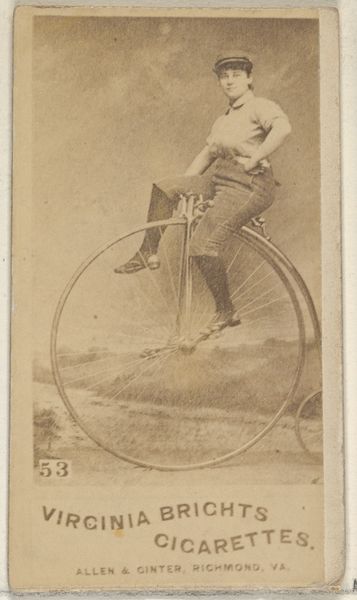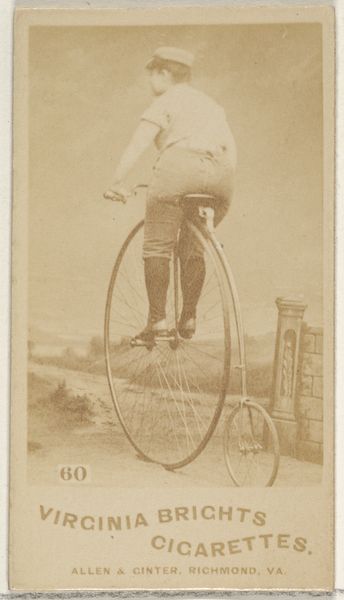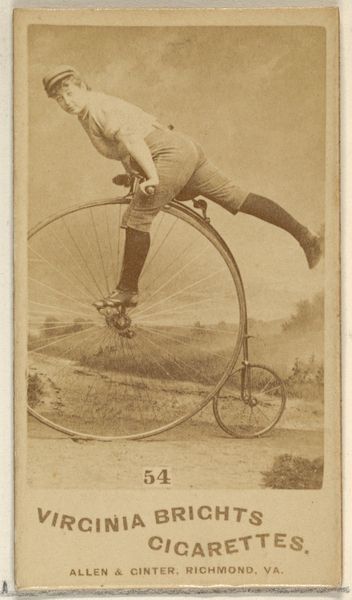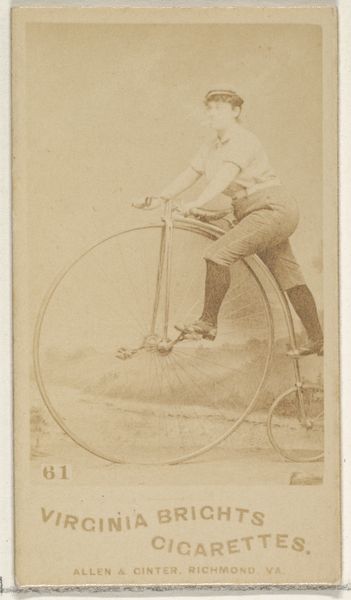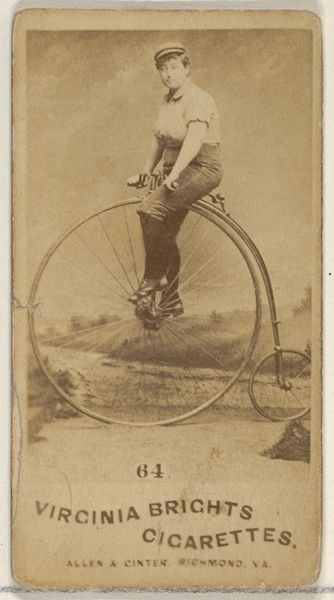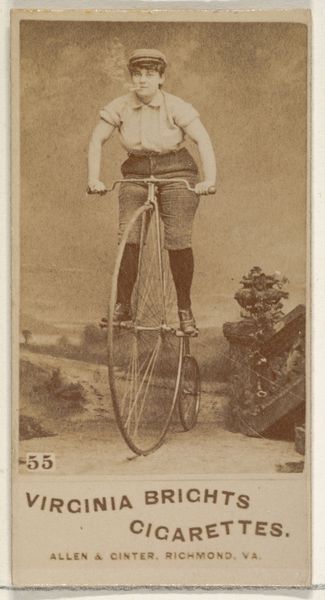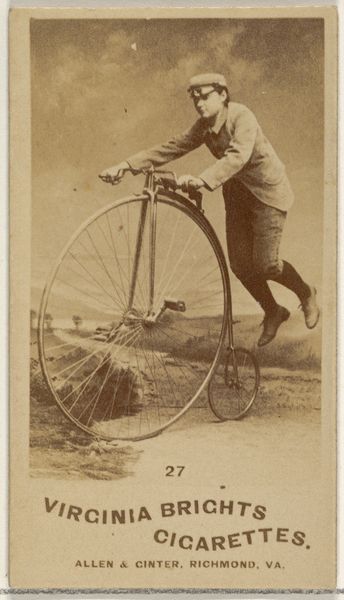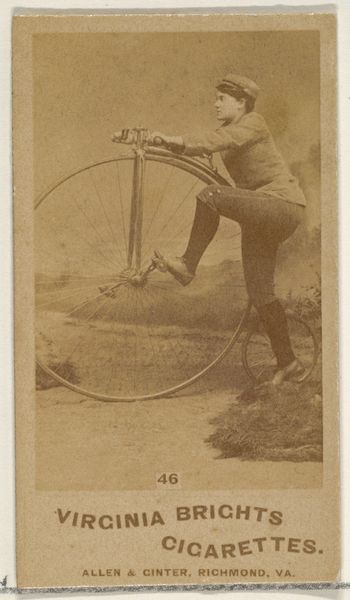
Card 52, from the Girl Cyclists series (N49) for Virginia Brights Cigarettes 1887
0:00
0:00
drawing, print, photography
#
portrait
#
drawing
# print
#
photography
#
genre-painting
Dimensions: Sheet: 2 3/4 x 1 3/8 in. (7 x 3.5 cm)
Copyright: Public Domain
Editor: Here we have Card 52, from the Girl Cyclists series made around 1887. Allen & Ginter produced it for Virginia Brights Cigarettes. It looks like a photographic print and shows a woman perched confidently on a high-wheel bicycle. There's a striking sense of early feminism, of women embracing new forms of mobility and freedom. How do you see it? Curator: That bicycle itself becomes an interesting symbol. What did the bicycle represent at the time, in late 19th-century America? Editor: Well, thinking about women and bicycles back then… it seems to mean liberation. Freedom to move around independently. Curator: Precisely. It transcends mere transport. This woman, posed with what could be described as masculine garb in that time frame, in a male-dominated activity, challenges expected gender roles. She adopts the pose of an explorer. We read it as a signifier for the New Woman, the independent and assertive ideal gaining momentum. Even her direct gaze establishes the fact she’s breaking societal codes. Do you get any emotional weight from the commercial nature of its origin? Editor: Definitely, there is a conflict between marketing cigarettes and representing women's freedom. That tension is interesting. Is it just progressive marketing, or is it actually contributing to cultural change? Curator: I think it can be both. The cigarette company leverages changing perceptions for profit while normalizing images of independent women, subtly shifting cultural perceptions through widespread visual imagery. It's about visual propagation of ideals. Editor: I hadn't really thought about it that way before – as this interplay between commercial interests and shifting cultural symbolism. Thanks. Curator: My pleasure. It shows how much coded information can be embedded in everyday images and, in this case, in unexpected artifacts.
Comments
No comments
Be the first to comment and join the conversation on the ultimate creative platform.
